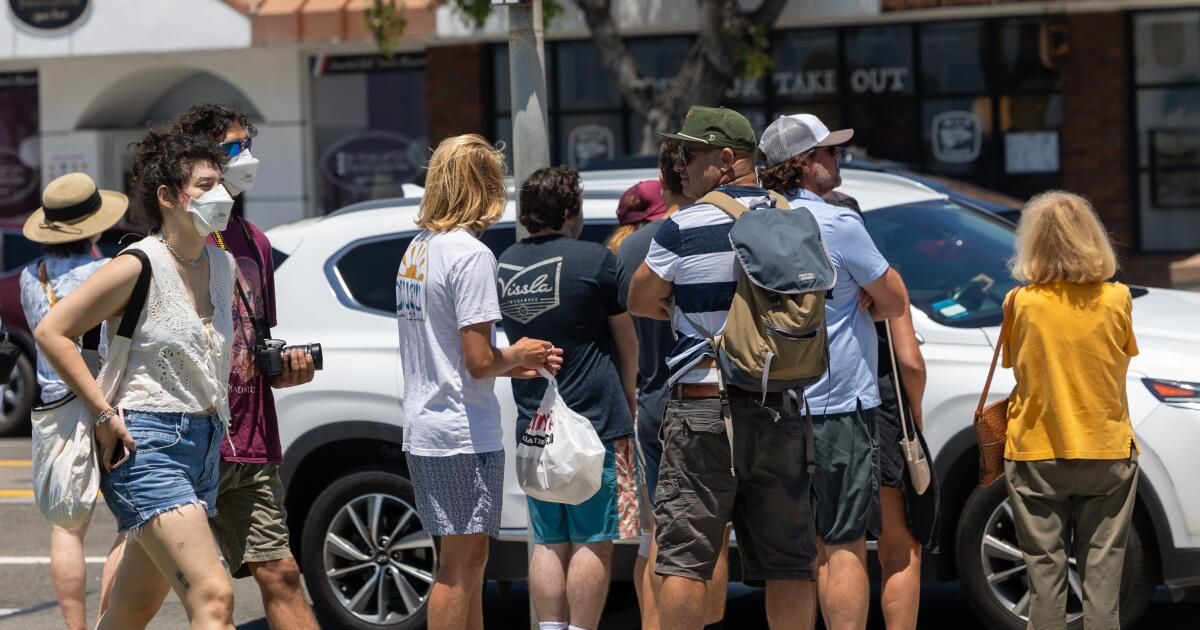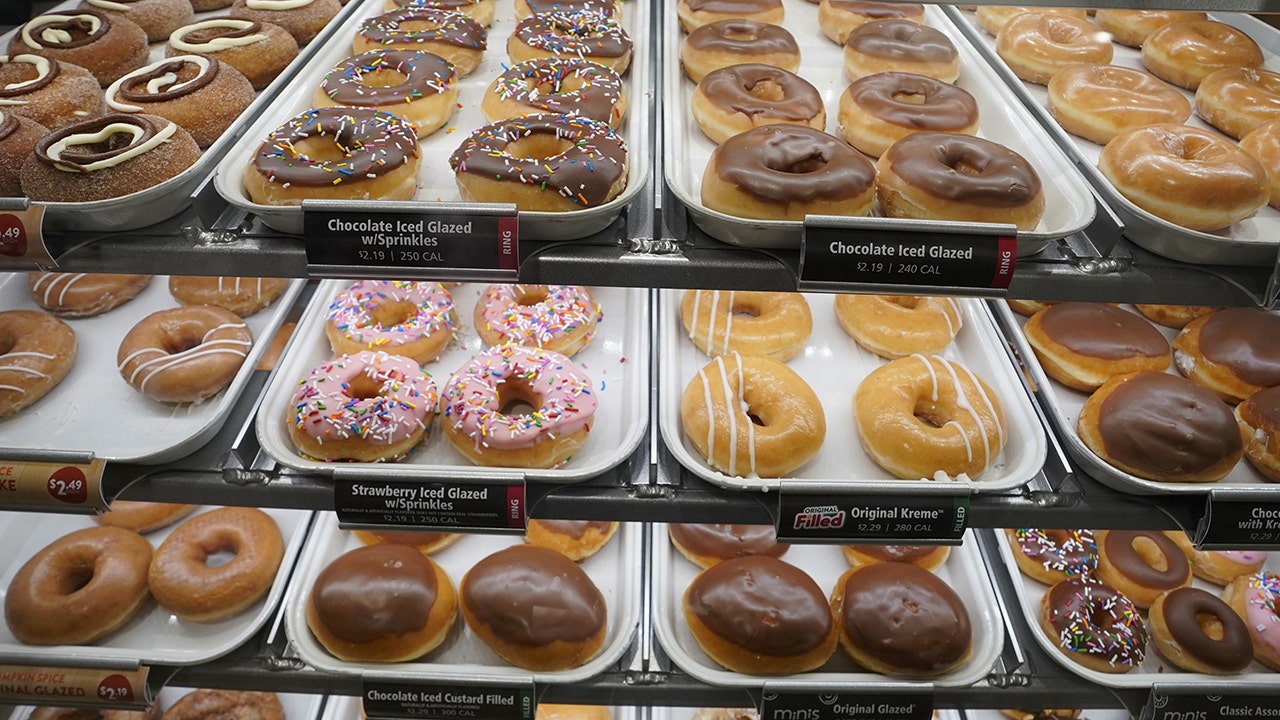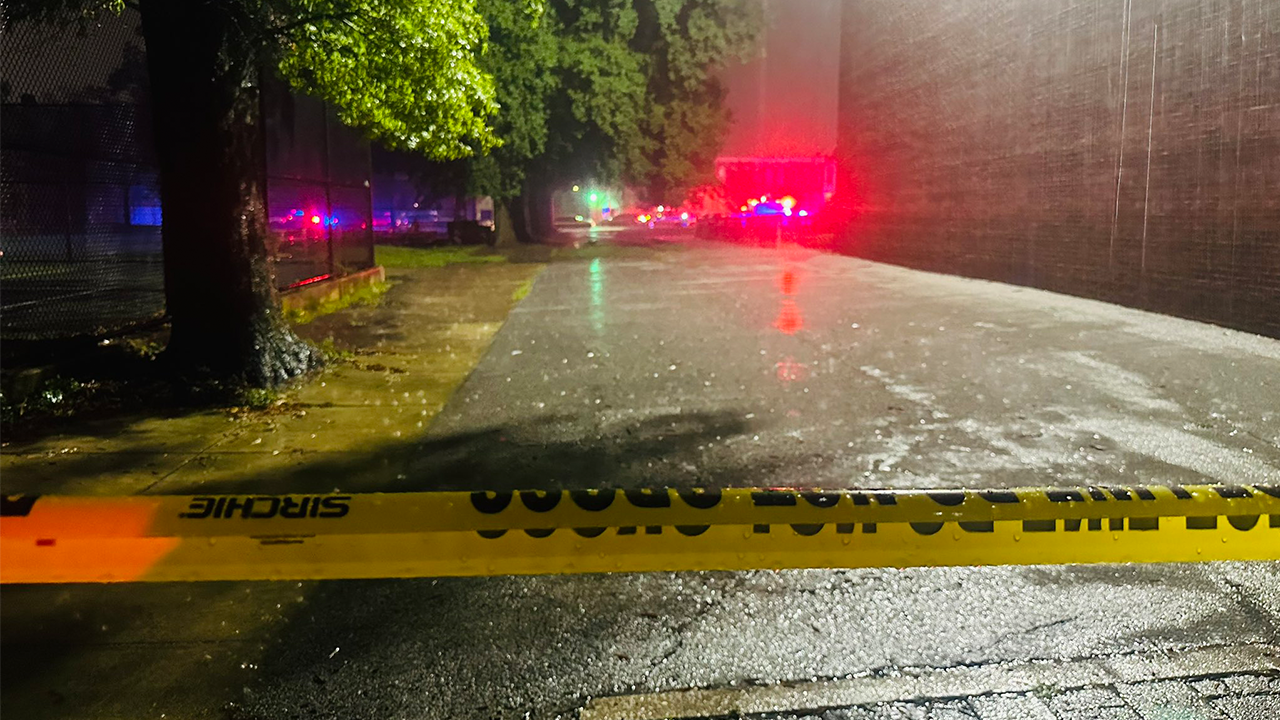California's strongest COVID-19 wave in years is still on the rise, and an unusual mid-summer mutation may be partly to blame.
According to experts, there are several possible culprits behind the worst summer spike in infections since 2022. A series of punishing heat waves and smoke from devastating wildfires have forced many Californians to stay home, where the disease can spread more easily. Most adults are also a long way from their last contact with the coronavirus — or their last vaccine dose — meaning they are more vulnerable to infection.
But changes in the virus have also widened the scope of the surge.
Of particular concern is the emergence of a hyperinfectious subvariant known as KP.3.1.1, which is so contagious that even people who have escaped infection during the pandemic are falling ill.
“COVID is extraordinarily common now,” said Dr. Elizabeth Hudson, regional chief of infectious diseases for Kaiser Permanente Southern California’s 16-hospital health care system.
COVID hospitalizations are rising but remain below the peaks of the past two summers, likely thanks to some residual immunity and the widespread availability of anti-COVID drugs like Paxlovid.
The World Health Organization has warned of rising COVID infections around the world and expressed concern about the possibility of more severe variants emerging.
“In recent months, regardless of the season, many countries have experienced surges in COVID-19, including at the Olympic Games,” said Dr Maria Van Kerkhove, WHO technical lead on COVID.
Among the athletes caught in the line was 27-year-old American sprinter Noah Lyles, who after winning gold in the men's 100-meter final fell short Thursday in the 200-meter final, taking bronze. Lyles collapsed after the race, battling shortness of breath and chest pain, and was later wheeled away from the venue.
“It definitely affected my performance,” he said of the illness, estimating he felt “between 90% and 95%” of his full strength.
The positive rate for coronavirus tests has been rising for weeks, exceeding 10% globally and more than 20% in Europe. In California, the positive rate for coronavirus tests was 14.3% in the week ending August 5, surpassing peaks from last summer and winter, and up from 10% a month ago.
There were already signs in May that the typical midyear wave in the United States had begun early, when a pair of new coronavirus subvariants (KP.2 and KP.1.1, collectively dubbed FLiRT) began to make waves, displacing the dominant winter strain, JN.1.
But by July, a descendant strain, KP.3.1.1, had already clearly spread.
“KP.3.1.1 is extremely transmissible and a little more evasive to the immune system. It emerged suddenly over the summer,” said Dr. Peter Chin-Hong, an infectious disease specialist at the University of California, San Francisco.
Cases are rising at Kaiser Permanente Southern California and “if you look at the CDC data… KP.3.1.1 is really what’s driving this particular surge,” Hudson said. “We’re certainly at much higher levels than we were last summer.”
Anecdotally, some infected people report feeling “quite ill, actually, with very severe fatigue in the first couple of days,” Hudson said.
People may think their symptoms are just allergies, she said, but “it's probably COVID. So we're just encouraging people to continue getting tested.”
However, an initial negative result does not necessarily mean there is no problem. Authorities recommend repeating the test up to five days after the onset of symptoms to be sure.
California has now reported four consecutive weeks of “very high” levels of coronavirus in its wastewater, according to data released Friday by the U.S. Centers for Disease Control and Prevention. That followed five weeks of “high” viral levels.
Last summer, California recorded just eight weeks with “high” levels of coronavirus in wastewater, and never reached “very high” levels. In the summer of 2022, California experienced 16 weeks with “high” or “very high” levels of coronavirus in wastewater.
“Fewer people have been vaccinated this year than this time last year,” Chin-Hong said. “That means that, especially among older people, they are simply not prepared to deal with this virus.”
According to the CDC, there are 44 states with “high” or “very high” levels of coronavirus in their wastewater. Five states and the District of Columbia have “moderate” levels, and there is no data for North Dakota.
The CDC said coronavirus infections are “growing” or “likely growing” in 32 states, including California; are “stable or uncertain” in seven states as well as the District of Columbia; are “likely declining” in Connecticut; and “are declining” in Hawaii and Nevada. There were no estimates in eight states.
In Los Angeles County, coronavirus levels in wastewater rose to 54% of last winter’s peak during the 10-day period ending July 27, the most recent available. A week earlier, coronavirus levels in wastewater were at 44% of last winter’s peak.
During the week ending Aug. 4, Los Angeles County reported an average of 479 coronavirus cases per day, double the number from five weeks earlier. The cases are an undercount because they only reflect tests conducted at medical facilities, not tests conducted at home.
In Santa Clara County, the most populous in the San Francisco Bay Area, coronavirus levels were high in all sewer basins, including San Jose and Palo Alto.
Hospitalizations and emergency room visits related to the coronavirus are also on the rise. During the week ending Aug. 3, there were an average of 403 coronavirus-positive people in Los Angeles County hospitals per day. That’s double the number from five weeks earlier, but still about 70% of last summer’s peak and a third of the peak seen in the summer of 2022.
During the week ending Aug. 4, 4% of emergency room cases in Los Angeles County were classified as coronavirus-related, more than double the figure from seven weeks earlier. The peak last summer was 5.1%.
“We have had some people who have gotten very sick from COVID. These are people who tend to have very compromised immune systems,” Hudson said.
UC San Francisco has also seen a rise in the number of hospitalized patients infected with the coronavirus. As of Friday, there were 28, up from fewer than 20 a week earlier, Chin-Hong said.
In the Bay Area, three counties have urged more people to consider wearing masks in indoor public spaces due to rising COVID cases. Contra Costa County’s public health department “recommends the use of masks in crowded indoor spaces, particularly for those at high risk for severe illness if infected,” the agency said Tuesday, following similar calls from health officials in San Francisco and Marin counties.
Compared with advice like washing hands and staying away from sick people, suggesting wearing a mask can provoke strong opposition from some.
“The moment people see this, it triggers a chain reaction in their minds of all the negative things about the pandemic, like the shutdown of society and social isolation,” said Dr. Abraar Karan, an infectious disease physician and researcher at Stanford University.
But masks help reduce the risk of infection, and people don't have to wear them all the time to benefit. Karan says he socializes and eats at indoor restaurants. But he chooses to wear a mask in other situations, such as “when I'm traveling” and, obviously, at work.
Doctors say wearing a mask is one of many tools people can use to reduce their risk and can be especially helpful in crowded, indoor settings.
Karan said she has seen more coronavirus patients while working ER shifts and suggested more health care providers take the time to order tests. She said she worries that when people come in with relatively mild symptoms, they may be sent home without being tested.
But that could miss a potential COVID diagnosis, potentially allowing a patient to get a prescription for an antiviral drug like Paxlovid.
Without testing, “you run the risk of cutting corners and not prescribing people medications that they technically should be getting,” Karan said.
Times staff writer David Wharton contributed to this report from Saint-Denis, France.











